
Destinations for bird watching
National parks are incredible places for bird watching. Whether you are a Sunday birdwatcher or a seasoned birder, these suggestions are definitely worth the detour. Check out our recommendations below!
Terra Nova National Park
Newfoundland and LabradorAs its name suggests, Terra Nova National Park is located in the Canadian island boreal forest of Eastern Newfoundland! Bird species living here usually inhabit the boreal forest. Also, different species of birds are often blown in the park by storms in the North Atlantic Ocean that pound the coastline!
Birds found here year-round include: boreal and black-capped chickadees, woodpeckers (hairy, downy, black-backed and Arctic three-toed), pine siskins, golden-crowned kinglets, juncos, pine grosbeaks, purple finches, white-winged crossbills and red crossbills, all of them forest-dwelling species. The rest of the species arrive in early spring. Keep an eye out for the olive-sided flycatcher, white-throated sparrow and fox sparrow, yellow-rumped warbler and magnolia warbler.
Shorebirds such as the common and Arctic terns, greater and lesser yellowlegs, bald eagle, plover and all sorts of species of ducks and sandpipers can be observed in the park's two bird sanctuaries.
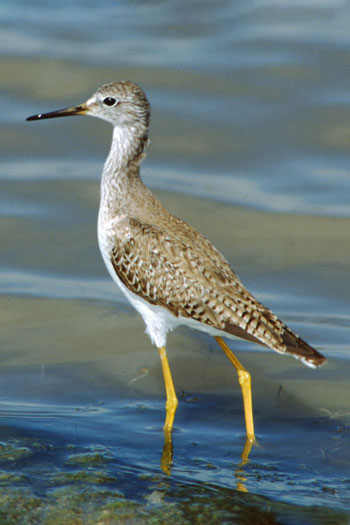
© Jim Flynn
Fundy National Park
New BrunswickDiscover the marine coastal environment of Fundy National Park and explore the plateau with its deep river valleys. This magical place is subdivided into ecosystems that shelter more than 260 bird species.
During the spring migration, you can observe up to 15 types of warblers: Cape May, yellowed-rumped, black-throated green and black-throated blue warblers! Other common species in the park include the pileated woodpecker, junco, white-winged crossbill, great blue heron, cormorant, semi-palmated sandpiper, semi-palmated plover and ruffed grouse. The majestic peregrine falcon, which has been successfully reintroduced, can be found along the park's cliffs.
In December, the park takes part in the Christmas bird count and visitors who don't mind the cold can join the ornithologists searching the park, up and down!
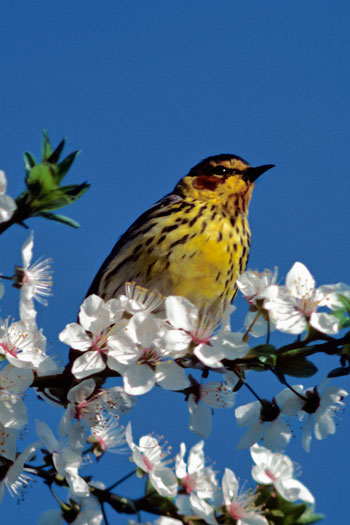
Forillon National Park
QuebecForillon National Park is a must-see, with its diverse landscapes, wildlife and plant life. On a peninsula barely 245 km2 in area, you will encounter lush forests, flowing rivers, marshes and lakes, and cliffs and seashores — all habitats for numerous bird species.
From forests teeming with life, to spectacular cliffs, Forillon offers birding enthusiasts an astonishing concentration of forest birds, water birds and seabirds. A total of 253 bird species can be found here, including 132 breeding species.
Seven different nesting seabirds can be observed, including the razorbill, common murre, black guillemot, great black-backed gull, herring gull, double-crested cormorant and the biggest colony of black-legged kittiwakes in eastern Canada. Several raptor species can be encountered (American kestrel, Northern harrier, bald eagle, etc.), as well as ducks (teal, blue bill, American black duck, scoter, eider, harlequin duck, goldeneye, merganser, etc.) and forest birds (warbler, vireo, woodpecker, passerine, etc.).
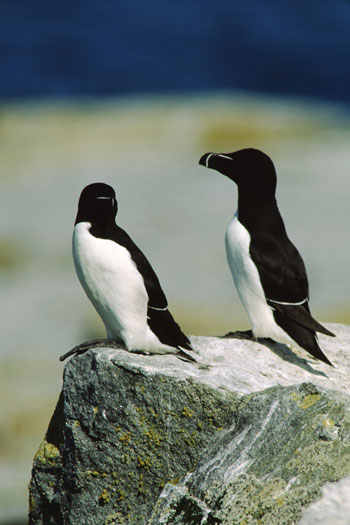
© Jim Flynn
Mingan Archipelago National Park Reserve
QuebecAbove the 50th parallel, brushing against the North Shore of the Gulf of St. Lawrence, discover limestone, and granite islands and islets! This rare string of beauty is home to about 200 bird speicies, and nearly 45 of them nest in the Mingan Archipelago, including 13 seabird species and several passerine species. The park reserve is an important migratory stopover for shorebirds, including the endangered red knot rufa.
Common eiders, terns, Atlantic puffins and razorbills form more than 40,000 seabird pairs who choose to make their home in this extraordinary landscape! Mingan Archipelago hosts the largest colonies of Arctic terns in the Gulf of St. Lawrence and the largest colonies of common terns in Quebec. It also hosts the most westerly colony of Atlantic puffins in its range. Keep an eye out for several raptors, who also nest in the islands, including the bald eagle and osprey.
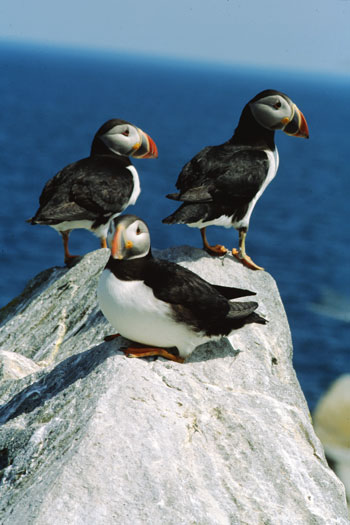
© Jim Flynn
Georgian Bay Islands National Park
OntarioGeorgian Bay Islands National Park is home to a variety of breeding bird species, particularly the songbirds that nest on Beausoleil Island, the largest of the park's 63 islands.
The park straddles the transition zone between the Great Lakes–St. Lawrence Lowlands region and the Canadian Shield. The lower half of Beausoleil Island is covered by a rich deciduous forest that shelters southern birds such as the wood thrush, scarlet tanager and black-throated blue warbler. The north side of the island attracts northern species such as the magnolia warbler, Canada warbler and winter wren.
In spring and fall, migrating birds cross the park, island by island. The migration is different every day! You could see anything from mixed flocks of warblers, vireos, kinglets, thrashers and sparrows during your hike on the trails of Beausoleil Island.
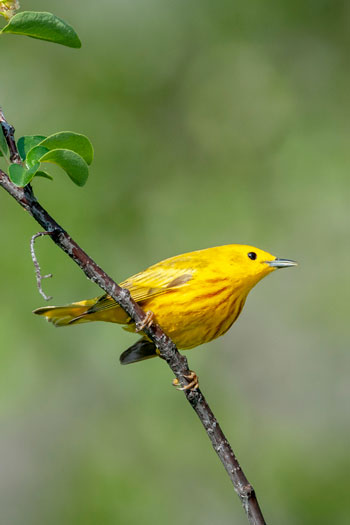
Point Pelee National Park
OntarioPoint Pelee National Park is not only one of Canada’s smallest national parks, it also has the greatest number of recorded bird species! Known as an Important Bird Area (IBA), more than 390 species of birds have been reported, from warblers to sandpipers and from ducks to diurnal raptors.
Did you know that during the two great migration periods (spring and fall), more than 200 neo-tropical migrant species stop here? Starting in March, Point Pelee’s bird population swells with the return of waterfowl! You can observe swans, dabbling ducks, grebes, loons and diving ducks. At the end of April, songbirds steal the show as they move through the park during the first three weeks of May.
As summer approaches in June, the flycatchers and shorebirds arrive. For those who love birds of prey, September is their period of greatest diversity. Waterfowl, particularly geese, return in great numbers in November and well into December.
In May, as part of the Festival of Birds, activities such as Birder Breakfast, Lunch and Learn sessions, and daily Birding Hikes usually take place for two weeks! During this period, visitors can have access to specially marked trails to maximize their chances for bird sighting. On a good day in May, it's possible to see 100 species during a visit. It's no wonder that this park is the choice meeting place for bird watchers–and birds–in North America!
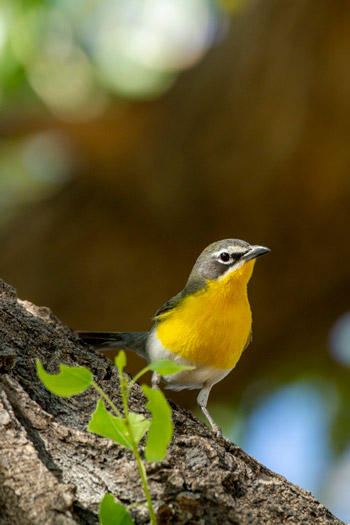
Waterton Lakes National Park
AlbertaWaterton Lakes National Park lies on the narrowest point in the Rockies where prairie, mountains and lakes converge. This park holds a variety of habitats and hosts over 255 bird species.
In May and June, you can watch warblers, hummingbirds, grouse and jays, as well as sandhill cranes, Clark's nutcrakers and pileated woodpeckers. In late fall, the Maskinonge and Waterton Lakes are key stopover points for migrating ducks, geese, swans, and mergansers.
For more than 100 years, bird enthusiasts have participated in annual spring and winter bird counts. It's an opportunity for birders to comb the park on foot, by vehicle, or on skis or snowshoes, with their bird list in hand as they follow promising trails to see the rarest and most prolific birds.

Gulf Islands National Park Reserve
British ColumbiaSituated on the Pacific Flyway migration route that connects the tundra with tropical and sub-tropical areas, Gulf Islands National Park Reserve is not to be missed by birds and their observers.
The great diversity and richness of terrestrial and marine habitats found in the Gulf Islands is a must-see, because it attracts more than 300 resident and migratory species. Catch the sight of common nighthawks, bald eagles, peregrine falcons, western screech owls, western sandpipers, pigeon guillemot, ancient murrelet, marbled murrelet, tufted puffins, rhinoceros auklets, grouse, barred owls, kingfishers, snow geese, black oystercatchers, olive-sided flycatchers, and more!
Sidney Spit (Sidney Island) and Bennet Bay (Mayne Island) are two sites that are definitely worth a visit for bird enthusiasts. These magnificent places are Important Bird and Biodiversity Areas (IBA) recognized worldwide for their abundance and diversity of seabirds, even including rare and threatened species.
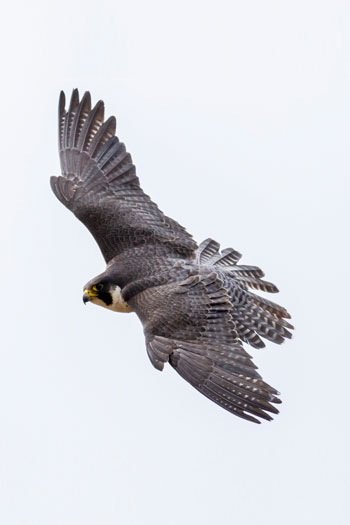
Gwaii Haanas National Park Reserve, National Marine Conservation Area Reserve, and Haida Heritage Site
British ColumbiaThe islands of Gwaii Haanas are the perfect paradise for bird watchers. About 1.5 million seabirds nest along the 4,700 km coastline of Haida Gwaii, and nearly half of these birds meet up at Gwaii Haanas.
Since the islands are situated on the Pacific Flyway migration route, dozens of bird species stop here in spring and fall. The coastline and forest provide shelter, a nesting place and food sources of prime importance to a wide variety of seabirds.
Birds that can be seen include the rhinoceros auklet, ancient murelet, tufted puffin, horned puffin, Cassin's auklet, pigeon guillemot, Leach's storm-petrel and fork-tailed storm-petrel, as well as the common murre, American black oystercatcher, pelagic cormorant, bald eagle and peregrine falcon (pealei subspecies).

Wood Buffalo National Park
UNESCO World Heritage SiteNorthwest Territories and Alberta
At Wood Buffalo National Park, everything is grand. Covering 44,807 km2, it is our largest national park. It protects a typical yet remarkable example of the Northern Boreal Plains in Canada. This park is the nesting area of the last migratory flock of whooping cranes in the world! It is the home to the Peace-Athabasca delta, one of the largest freshwater inland deltas in the world.
In spring and autumn, migratory water birds who use the four migration flyways of North America pass by this delta, so there is no shortage of birds to see! You’ll be able to spot the whooping crane, Tundra swan, snow goose, snow bunting, grebes (eared, horned, pied-billed and red-necked), many duck species, horned lark, American coot, Lapland longspur, Harris's sparrow, phalarope, plover, American avocet, etc. Every season offers one great discovery after another.

© Jim Flynn
- Date modified :